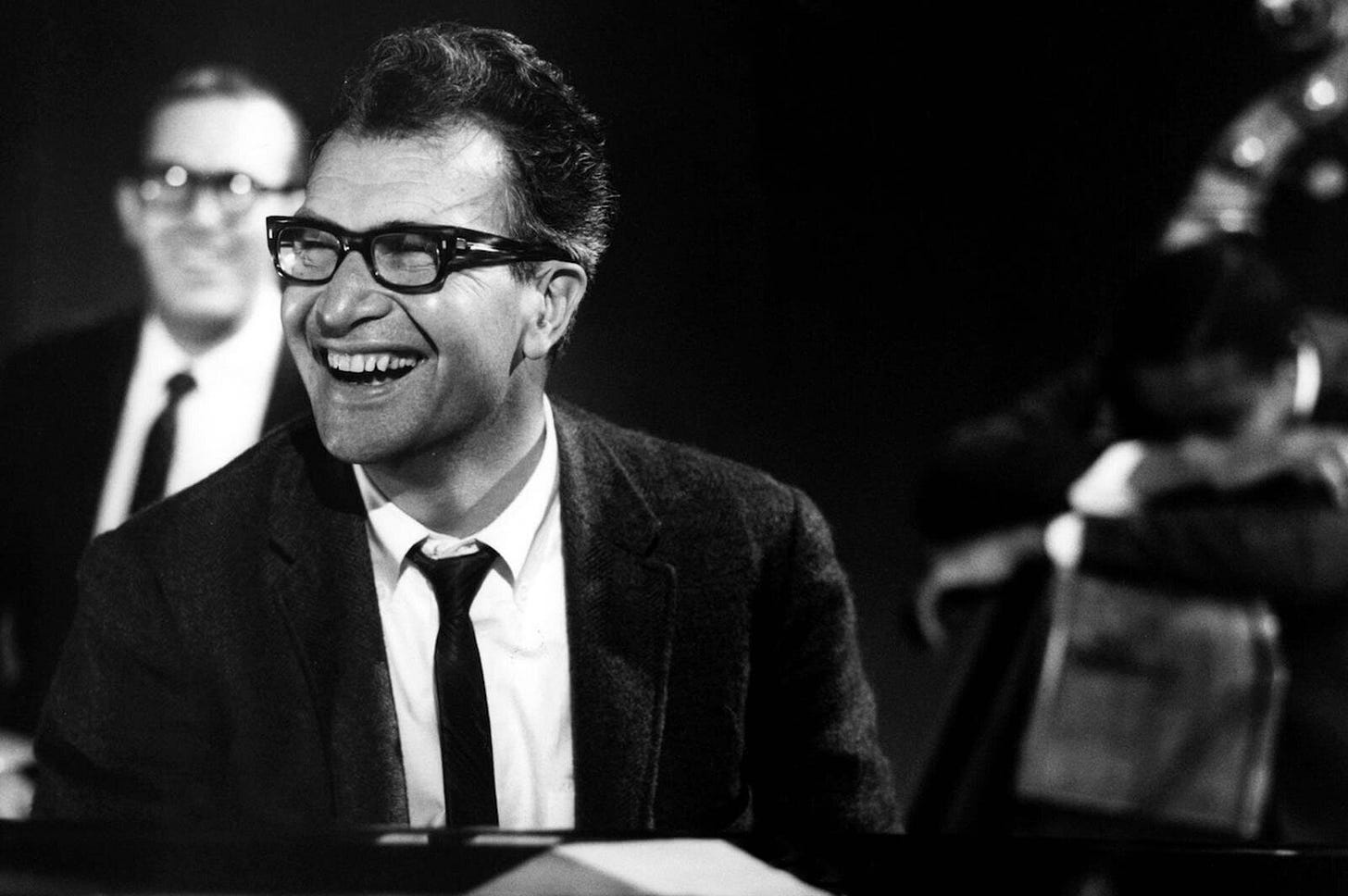The Turkish street musicians and the piano man
A true story about inspiration, preparation and purpose
“I'll have to explain to them that Bach was using the drinking songs of the day, that 'Oh Sacred Head Now Wounded', the original text that everyone in the congregation would know, was: 'My love has gone and left me, and I'm all alone, I cry into my Bierstein'. They'd all know that! Then Bach would take that melody, that the congregation knew, re-harmonize it—beautifully—make a fugue out of it, or whatever the treatment was.”
- Dave Brubeck
That J. S. Bach repurposed the most popular drinking tunes of the day into sacred church music is hilarious. And insightful. And fun too. I can only imagine the smiles that emerged on the faces of the church attendees the first time Oh Sacred Head Now Wounded was performed in church. All the drunks must have felt right at home.
Nicely done.
Dave Brubeck told and retold this story as an example of how repurposing, remixing musical tunes may make for new musical explorations.
One of Dave Brubeck’s most famous songs, on his most famous album, Take Five, was inspired by street musicians in Turkey playing a well-known Turkish folk tune.
During a morning walk in Istanbul, Brubeck encountered street musicians playing a unique and quick rhythm in an uncommon 9/8 time signature, a time signature difficult for Western musicians to incorporate.
That afternoon Brubeck was at a local radio station for an interview with its own orchestra. Brubeck mentioned the rhythm to the musicians on break. After he hummed it, they recognized it as a well-known Turkish folk song and explained to Brubeck: "This rhythm is to us what the blues is to you."
The tune made a lasting impression and he continued to listen carefully for melodies and rhythms that resonated with him as he travelled.
Returning to the USA, Brubeck, and the other members of his band, Paul Desmond on alto saxophone, Eugene Wright on bass, Joe Morello on drums, began working out songs using alternate time signatures. Joe Morello was able to play drum solos in alternate meters and wanted songs to showcase this ability.
Together, they created the Take Five album with all original songs exploring alternate time signatures. An album of all original compositions alone was a challenge to the general practice of jazz music albums, aside from the unusual alternate metres. Much of jazz recordings were of jazz standards, familiar pieces.
Bringing together the unique rhythms for a whole album was a significant challenge for all the musicians. The second song on the album, Blue Rondo à la Turk, is a masterpiece. It’s worth every listen.
That tune has been stuck in my head for almost 3 decades now. It still brings a smile to my face whenever I hear the tune.
For me it’s an example of how inspiration, preparation and purpose and collaboration come together beautifully.
Brubeck was available to be inspired by any tune, found anywhere.
Together with his band, he was committed to exploring the edges of ability. His curiosity, humility, commitment to excellence, and collaboration with his band made possible the best-selling jazz album of all time.
His creative work is an example for us all.
Inspiration is everywhere. Will we notice it? Will we be humble enough to make use of the inspiration around us?
The inspiration is only able to be put to use when we are creatively engaged. We need to be walking the path towards a destination, a goal. We need to be doing the work to make good on our inspirations.
As we walk our paths, those along for the journey bring their own inspirations to the dialogue. This dialogue is jazz music. The dialogue and collaboration with others may make for powerful creative work.
And new ideas often require a well-honed ability to execute and deliver on the promise. So much of jazz is the preparation to be able to respond dynamically to other musicians, live, in the moment.
Our skills make possible the emergence of new ideas. And our skills develop in the direction of our creative goals. A jazz pianist and a classical pianist develop remarkably different skills, each aligned with their respective goals.
So it is for us. With a direction, a goal, collaborators, skill, humility, curiosity, and dedication, beautiful things are co-created.
With photography, it’s the same.
Sometimes a musical line, a painting, a statue, anything might inspire. And when that inspiration is carried within and taken into creative work, the root of inspiration can grow into something new and beautiful.
I was lucky enough to attend a Dave Brubeck concert in Redwood City, Ca in my late 20s. I recall the man’s energy as he walked onto the stage, slowly, carefully. Addressing the audience, his stories were well crafted, each word well chosen. Having spent over 60 years performing and entertaining he entranced us all in a way I’ve rarely seen.
And when he sat down at the piano, he lit it on fire.
The only other performer I’ve witnessed with such power and experience was Ray Charles, who I saw in concert as a young boy. His energy too was infectious. For both Brubeck and Charles, I remember most their magnetic and infectious energy and presence. They both performed and communicated and entertained as much with their smiles as with their fingers and voices.
I wonder what 60 years of committed creative work looks like in my own life. Perhaps I will be old enough and strong enough to find out!
I’d be curious to hear what stories inspire you in your own life, in your own work. Let me know!
If you haven’t recently listened to Blue Rondo à la Turk, you might give it a listen.
Here is a recording from Youtube:



You nailed it. Great Brubeck story about Bach and his Turkey street music experience. ..